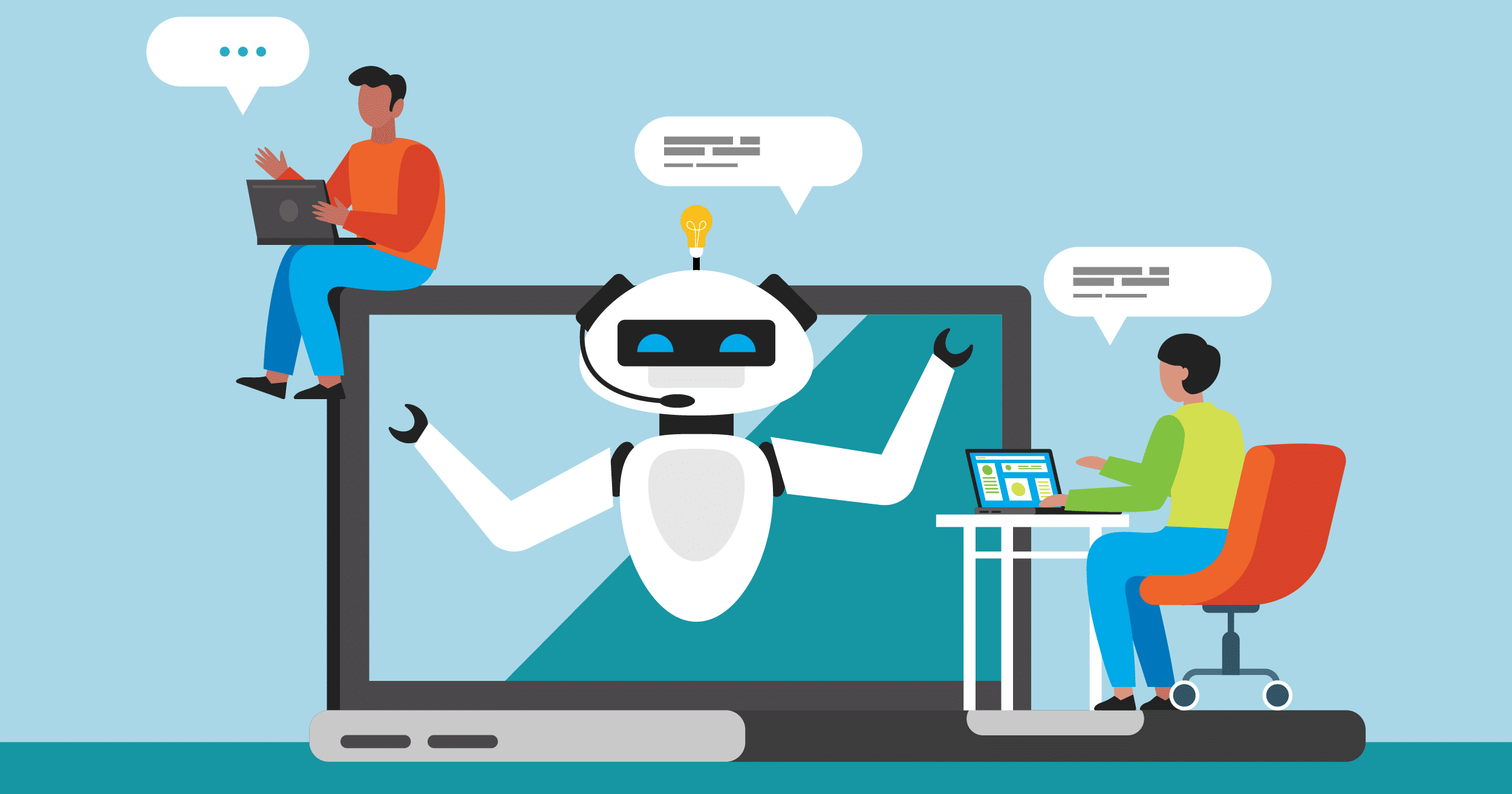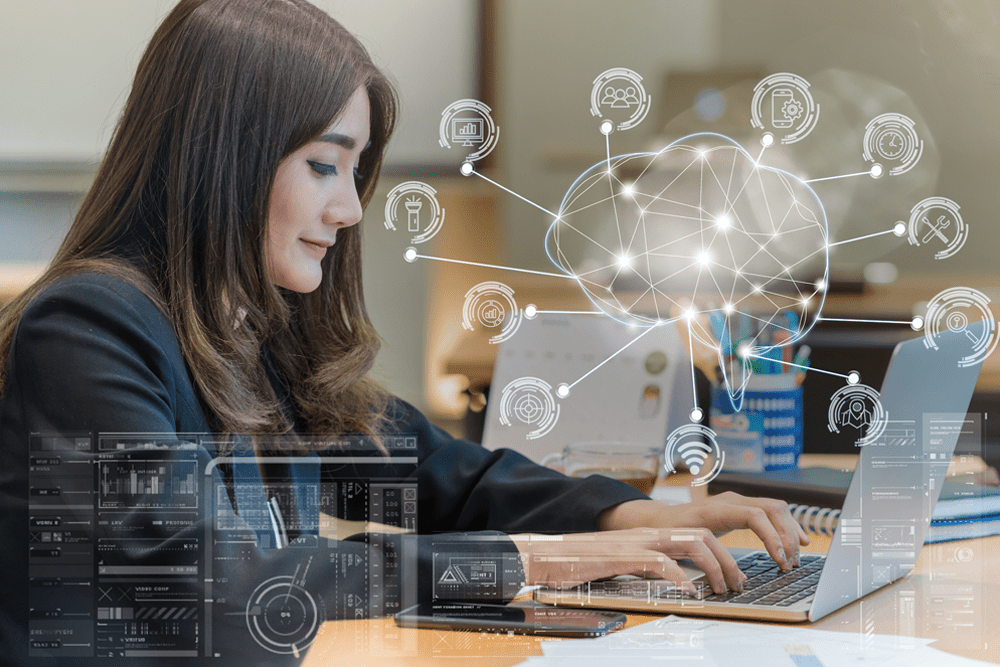The Role of AI in the Workplace: Revolutionizing the Future of Work
The workplace is evolving at a rapid pace, and artificial intelligence (AI) is leading the charge. From automating routine tasks to enhancing decision-making processes, AI is reshaping how businesses operate and employees perform their roles. In this article, we’ll explore the role of AI in the workplace, how it is transforming businesses, and what it means for employees. Whether you’re an employer or employee, understanding this transformation is crucial for staying ahead in today’s competitive landscape.

Understanding Artificial Intelligence
Before diving into the impact of AI on the workplace, let’s first understand what AI is. Simply put, artificial intelligence refers to machines designed to simulate human intelligence processes, including learning, reasoning, and problem-solving. AI encompasses various technologies, including machine learning, natural language processing (NLP), and robotic process automation (RPA).
Key Types of AI Technologies in the Workplace
- Machine Learning (ML): Allows computers to learn from data and improve performance without being explicitly programmed. It is widely used for predictive analytics and data analysis.
- Natural Language Processing (NLP): Enables machines to understand and interact with human language. NLP is used in chatbots, customer service automation, and sentiment analysis.
- Robotic Process Automation (RPA): Automates repetitive and rule-based tasks. RPA is commonly used in finance, HR, and customer support for data entry and processing.
The Impact of AI on the Workplace
AI is no longer just a futuristic concept. It is now an integral part of various industries, including finance, healthcare, manufacturing, and customer service. Below are some of the key areas where AI is transforming the workplace:
1. Enhancing Productivity and Efficiency
AI is designed to handle repetitive and mundane tasks, allowing employees to focus on more strategic and creative aspects of their work. For instance, AI-powered tools can automate tasks such as data entry, scheduling, and inventory management, freeing up valuable time for employees to engage in higher-value activities.
By automating these processes, businesses can significantly improve their overall productivity, ensuring that resources are used more effectively.
2. Improving Decision-Making with Data Insights
In today’s data-driven world, decision-making is increasingly reliant on data analytics. AI tools can process vast amounts of data much faster than humans, providing businesses with valuable insights and predictive analytics. These insights can help in areas such as market analysis, customer behavior, and financial forecasting, leading to more informed and effective decision-making.
With the help of AI, businesses can:
- Predict trends
- Identify new business opportunities
- Optimize operations
3. AI-Powered Customer Service
One of the most common applications of AI in the workplace is through chatbots and virtual assistants. These AI tools can handle customer inquiries, troubleshoot issues, and even complete transactions, all without human intervention. Not only does this enhance customer experience, but it also reduces the workload on customer service teams, allowing them to focus on more complex cases.
For instance, AI chatbots can provide instant responses to customer queries, 24/7, improving customer satisfaction and retention.
4. Personalizing Employee Experience
AI is also revolutionizing the employee experience by creating personalized work environments. AI-driven systems can analyze employee preferences, behavior, and feedback to tailor training programs, work schedules, and even project assignments. By leveraging AI, companies can improve employee engagement, motivation, and retention.
5. Enhancing Workplace Safety
AI applications are also being used to improve workplace safety, particularly in industries like manufacturing and construction. AI-powered systems can monitor working conditions, track potential hazards, and even alert employees about unsafe situations in real-time.
For example, AI-driven safety systems can detect hazardous gases or monitor the physical well-being of workers in high-risk environments, ensuring that preventive measures are taken before accidents occur.

The Benefits of AI for Businesses
For businesses, the implementation of AI technology brings numerous benefits, including:
Cost Reduction
AI can help businesses reduce costs by automating repetitive tasks and improving operational efficiency. By reducing the need for manual intervention, businesses can lower labor costs and minimize errors.
Scalability
As businesses grow, so does the volume of tasks and data they need to handle. AI allows organizations to scale operations without the need for significant human resource expansion.
Improved Competitiveness
AI gives businesses a competitive edge by enabling faster decision-making, providing deeper insights into market trends, and helping companies adapt to changes more quickly.
Challenges of AI in the Workplace
Despite the numerous benefits, the integration of AI in the workplace also presents some challenges. It’s crucial to address these challenges to ensure a smooth transition into the future of work.
1. Job Displacement
One of the most significant concerns surrounding AI is job displacement. As AI automates repetitive tasks, some roles may become obsolete, particularly in industries that rely heavily on manual labor or data processing.
However, rather than replacing jobs entirely, AI is often seen as a tool that augments human work, enabling employees to take on more complex and strategic tasks. Reskilling and upskilling employees will be essential in ensuring that they are equipped to handle the evolving job market.
2. Data Privacy and Security
AI relies on large amounts of data, which can raise concerns about data privacy and security. It’s crucial for organizations to implement strong data protection measures to safeguard sensitive information and ensure compliance with data regulations.
3. Bias in AI Algorithms
AI algorithms are only as good as the data they are trained on. If the data used is biased, AI systems can produce biased results, leading to discrimination in hiring, promotions, or customer interactions. To address this, businesses must ensure that their AI systems are designed with fairness in mind and regularly audited for bias.

Future Outlook: The Role of AI in the Workplace
As AI continues to evolve, its role in the workplace will expand. We can expect more AI-driven solutions in areas such as:
- Employee well-being: AI can monitor and assess employee mental health, providing support and resources as needed.
- Remote work: AI-powered tools will play a significant role in enhancing virtual collaboration, communication, and productivity in remote work environments.
- Smart office environments: AI can optimize office layouts, energy usage, and even personalize workspaces to enhance employee comfort and efficiency.
How Can You Prepare for AI in Your Workplace?
As AI continues to reshape the workplace, it’s essential for both businesses and employees to stay proactive. Here are some steps to prepare for the AI revolution:
- Invest in AI tools: Embrace AI technologies that align with your business needs. This could include AI-driven project management software, customer service tools, or data analytics platforms.
- Focus on lifelong learning: Employees should focus on acquiring new skills, particularly in areas like data science, machine learning, and AI programming.
- Foster a culture of innovation: Encourage employees to explore new ways of leveraging AI to improve workflows and processes.
FAQs About AI in the Workplace
Q1: Will AI replace my job?
While AI may automate some tasks, it is unlikely to replace jobs entirely. Instead, AI will likely enhance roles, allowing employees to focus on more complex and creative tasks. Reskilling will be key to adapting to AI-driven changes.
Q2: How does AI improve customer service?
AI enhances customer service by automating responses through chatbots, processing customer requests more quickly, and offering 24/7 support, leading to better customer satisfaction.
Q3: Can AI help with workplace safety?
Yes, AI can monitor workplace conditions and detect potential hazards, ensuring that preventive measures are taken to protect employees from harm.
Q4: How can I stay ahead in an AI-driven workplace?
Stay updated with AI trends, invest in continuous learning, and adapt your skills to work alongside AI tools. Embrace change, and seek out opportunities for innovation in your role.
Conclusion
Artificial intelligence is no longer a far-off concept but an integral part of modern workplaces. By automating tasks, providing data insights, and enhancing decision-making, AI is enabling businesses to operate more efficiently and effectively. However, as with any technological advancement, there are challenges to overcome, including job displacement and the need for new skills. By preparing for these changes, both employers and employees can leverage AI to build a more innovative, productive, and dynamic workplace.
Stay informed, stay adaptable, and embrace the future of work powered by AI.
